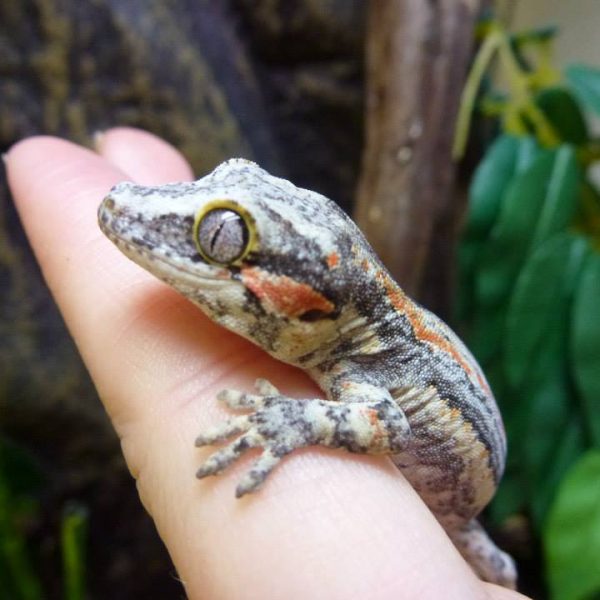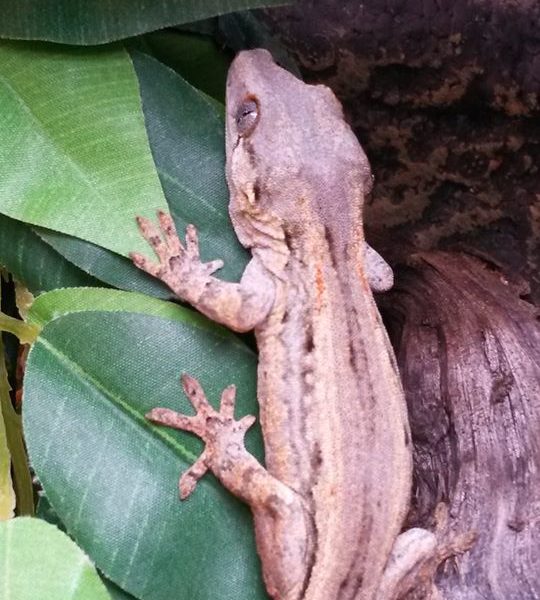Copyright 2021 Evolution Reptiles
All rights reserved.
Copyright 2025 Evolution Reptiles
All rights reserved.
All rights reserved.


Closely related to the crested gecko, the gargoyle gecko is a solid, medium sized lizard that hails from the islands of New Caledonia, close to Australia and New Guinea. Although they can be shy, the gargoyle gecko makes a robust, long lived pet.
Don’t forget to read our article on minimum standards – it’s very useful!
Our animals are only available for collection in store. Speak to our care team, or visit us in-store to purchase your new pet.
Please read our article on minimum standards – it’s very important!
Closely related to the crested gecko, the gargoyle gecko is a solid, medium sized lizard that hails from the islands of New Caledonia, close to Australia and New Guinea. Instead of the crestie’s spiky fringe, the gargoyle gecko (often referred to just as the ‘garg’) has a pair of long ridges on top of its head. These were thought to look a bit like ears, hence the second part of the latin name (Rhacodactylus auriculatus), but as the gecko grows they do look more like horns – hence the common name!
They are available in a range of patterns and colours, from a mossy mottling that vanishes against cork bark all the way up to bright red stripes on an ashy grey background. Robust and fairly large, the gargoyle gecko (often referred to as just ‘garg’) can sometimes appear clumsy as it scrambles around its cage; although they do have the ‘sticky feet’ common to most geckos, they are not as well developed as the feet of the crested gecko and many of them cannot climb glass. They are very good at catching themselves if they slip, and very rarely fall.
Gargoyles are often found on the outskirts of the forests, in scrubland and more open areas – they’re the Rhacodactylus species most likely to be found on the ground. They do have a rather more restricted range than the crested gecko, being found only on the lower third of Grand Terre, the main island of the New Caledonia group. They are tolerant of higher background temperatures than many of the other Rhacodactylus, so if you want a terrarium in a warm room, a gargoyle is going to make a very good choice.
They are rather more predatory than their cousins, so keeping them in a group isn’t a great idea unless you can have a trio (one male to two females) and a lot of space and cover. They are best kept and raised alone, as any imbalance in size will see the smaller animal bullied relentlessly. Allow a good sized terrarium 60 x 45 x 60cm (2’ x 18” x 2’) works very well, as it allows for an open floor space and horizontal branches. Although larger is always better!
You should aim for a background temperature of 25 to 27ºC (77 to 80ºF), with a hotspot that can be up to 30ºC (86ºF). Night time temperatures can drop to as low as 15ºC (59ºF), although around 20ºC (68ºF) will be more comfortable for your gecko. This is best achieved with a heat mat controlled by a thermostat on the side of the terrarium, with a small heat bulb overhead to give a hotspot. UVB light is absolutely required, and can be provided by a compact UV bulb or a tube. Your gecko should be given plenty of places to hide away from the light, as well as areas to emerge and bask. Just like more terrestrial geckos, they will often sit just partially exposed to the light in order to get benefit from it.
Feeding is a simple affair. They can be maintained on a complete gecko food, but they do appreciate a higher proportion of bugs than a crested gecko. Any livefood will be taken with gusto, so they can be given a variety – don’t forget the calcium and multivitamin/multimineral supplements. A word of caution, however; gargoyles can be incredibly secretive eaters! It’s not at all unusual to not see them eat for some considerable time. Just make sure the food is disappearing and poo is appearing on the glass, and all will be well. Allow them to feed when they feel most comfortable, and they will soon feel confident enough to eat while being observed.
Robust and beautiful, gargs make an excellent alternative to cresties and are fascinating creatures in their own right!
Copyright 2021 Evolution Reptiles
All rights reserved.